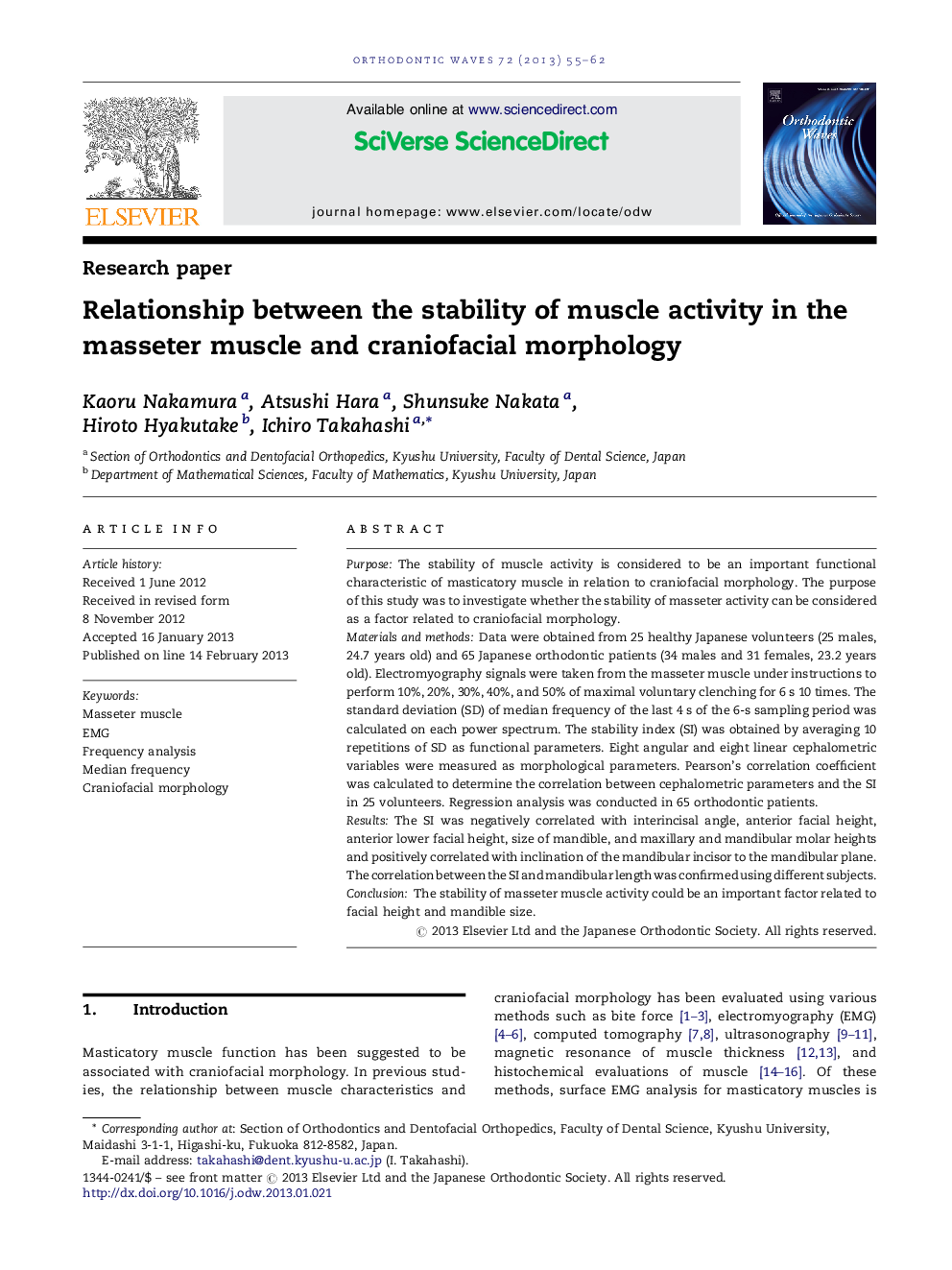| Article ID | Journal | Published Year | Pages | File Type |
|---|---|---|---|---|
| 3170461 | Orthodontic Waves | 2013 | 8 Pages |
PurposeThe stability of muscle activity is considered to be an important functional characteristic of masticatory muscle in relation to craniofacial morphology. The purpose of this study was to investigate whether the stability of masseter activity can be considered as a factor related to craniofacial morphology.Materials and methodsData were obtained from 25 healthy Japanese volunteers (25 males, 24.7 years old) and 65 Japanese orthodontic patients (34 males and 31 females, 23.2 years old). Electromyography signals were taken from the masseter muscle under instructions to perform 10%, 20%, 30%, 40%, and 50% of maximal voluntary clenching for 6 s 10 times. The standard deviation (SD) of median frequency of the last 4 s of the 6-s sampling period was calculated on each power spectrum. The stability index (SI) was obtained by averaging 10 repetitions of SD as functional parameters. Eight angular and eight linear cephalometric variables were measured as morphological parameters. Pearson's correlation coefficient was calculated to determine the correlation between cephalometric parameters and the SI in 25 volunteers. Regression analysis was conducted in 65 orthodontic patients.ResultsThe SI was negatively correlated with interincisal angle, anterior facial height, anterior lower facial height, size of mandible, and maxillary and mandibular molar heights and positively correlated with inclination of the mandibular incisor to the mandibular plane. The correlation between the SI and mandibular length was confirmed using different subjects.ConclusionThe stability of masseter muscle activity could be an important factor related to facial height and mandible size.
